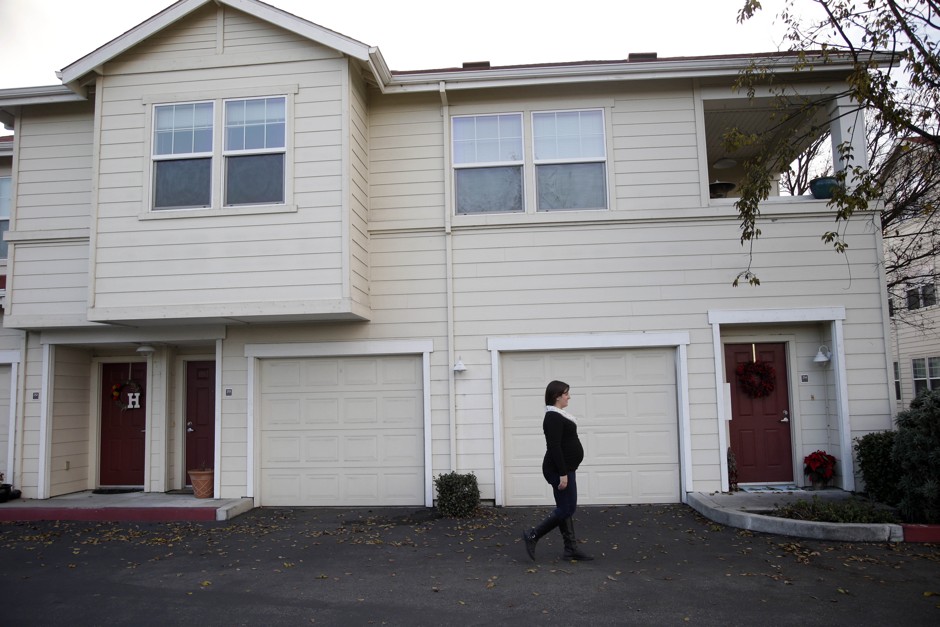Silicon Valley at Home Executive Director tries to help CityLab writer Sarah Holder figure out why residents in San Jose oppose building housing for teachers.
See the original story at CityLab.
Why Are So Many People In San Jose Fighting Housing for Teachers?
By Sarah Holder
The school system’s plan to build affordable apartment units for the city’s teachers has triggered a fierce backlash in one affluent area.
Taylor Swenson doesn’t want to leave San José. She doesn’t want to leave the teachers in the San José Unified School District she’s been training for three years, or abandon the kids she’s been supporting for almost a decade, or stop going to the downtown street festivals she’s been attending since childhood. But along with hundreds of her fellow educators in San José, she’s grappling with the reality that living in housing-stretched, inhospitably expensive Northern California on a teachers’ salary is getting impossible. One by one, they’ve been getting out.“We don’t have our heart set on somewhere else,” Swenson says, “because our heart is set on here.”She and her husband are lucky: They rent a two-bedroom apartment downtown for close to the zip code’s $3,100-per-month average, she says, near to the San José Unified schools she started teaching for in 2010 and now works as a teacher coach. Many of her colleagues drive up to two hours into the city center each morning, from places like Tracy and Stockton and Livermore. Others make ends meet by living with multiple roommates. But if things don’t change, Swenson will be forced to join the exodus of less-affluent Bay Area residents who are leaving the region for more-affordable climes. San José has a median home price of almost $1.1 million, according to Zillow, and a median rental price of almost $3,500. For teachers and other public employees, these costs have also been paired with stagnant teacher wages. Schools have felt the impact: Of the approximately 1,400 classroom teachers employed by the San José Unified School District, one in seven have to be replaced every year, according to deputy superintendent Stephen McMahon. The most common reason teachers offered for leaving has been the cost of living. “This to us is concerning,” said McMahon. “We want our students to have long-term teachers. And we want to be able to help teachers support their families.”To a degree, San José shares this problem with many other cities—every state had a teacher shortage last year. But the towering gap between Silicon Valley’s housing prices and its teachers’ salaries have led SJUSD officials to consider an unusual solution: They want to build affordable workforce housing for struggling teachers in the district.Specifically, the San José Unified School District is looking at building affordable rental units on some of 41 active school sites it owns in Santa Clara County. The plan is still more of an idea than a fine-tuned proposal at this point, but nine sites were chosen as viable candidates, because they’re currently under-enrolled or in need of an upgrade. The schools wouldn’t close entirely, but their original buildings could be razed and rebuilt, and students reallocated elsewhere. But two of those prospects, Leland High School and Bret Harte Middle School, are located in the Almaden Valley, one of the wealthiest neighborhoods in the county. And many community members there responded to the scheme with outrage.Soon after the district announced the nine-school short list on September 27, Greg Braley, a resident of Almaden Valley, started a Change.org petition to “Save Leland and Bret Harte.” (It now has almost 6,000 signatures.) Residents, the petition reads, are “distraught and concerned” about the prospect of teacher housing. “It’s just frankly not in fitting with the rest of the community,” Braley told a local Fox channel. (Braley did not respond to CityLab’s requests for comment.) According to The Mercury News, a recent public meeting to discuss the plan “devolved into angry shouting.”Nationally, advocates for building more affordable housing swiftly latched on to the spectacle of affluent homeowners leading a teacher-housing backlash as a way to illustrate the contemptibility of the Bay Area’s NIMBY activism. From a pro-development YIMBY perspective, the comments left on Braley’s Change.org petition might serve the same function. “Building houses in every nook and cranny is not the solution!” one signer wrote. Another commented: “Taking away two fantastic neighborhood schools to bring in low income housing is absolutely ridiculous … This would devalue home prices in the area significantly. This isn’t really a consideration, is it?”
One more added: “Do this and ‘affordable housing’ will flood (fill up 10 stories high in ugly buildings) the Almaden Valley. This project is the thin edge of the wedge, IMHO.” Such sentiments have long reverberated across Bay Area communities, says Leslye Corsiglia, the executive director of Silicon Valley @ Home, an affordable housing advocacy group. But lately they’ve been getting louder. “I attribute some of that to the current state of discourse at the national level,” she said. “It used to be that you opposed new development by saying, ‘Oh it’s going to cause more traffic or impact our schools,’ and now you hear people say things like, ‘We don’t want low-income people here because they’re not educated and it will impact our community.’”Similar objections were recently raised in nearby Cupertino (average home price: over $2 million) over a plan to transform an abandoned mall into 2,400 housing units, half of which would be affordable. “This would mean that we would have uneducated people living in Cupertino,” one community member said at a meeting. “A lot of other residents and I are concerned that this would make the current residents of Cupertino uncomfortable, and would split our city in half.”The Cupertino project was approved anyway. But the combination of angry residents and historically restrictive zoning laws has been an effective foil for new housing construction, and a major headache for city leaders struggling to keep lower-income workers from leaving. An uncharacteristic wave of out-migration has rippled across the San Francisco Bay Area in recent years. In 2017, the number of people moving away from the region was the highest in more than a decade. That exodus has been accompanied by an almost equal and opposite influx of higher-income newcomers—which, according to an October paper out of UC Berkeley and BuildZoom, accounts for widening inequality in the region. According to the report: The discrepancy between the inbound and outbound movers captures the intensity with which the region’s social fabric is changing. In fact, among all large U.S. metros, the Bay Area has the greatest such discrepancy. The concern is that a greater outflow of people from the Bay Area means the nature of the region is changing more rapidly and profoundly than before.
And there may be more change on the way: According to a survey by the business-backed policy advocacy group Bay Area Council, 46 percent of residents (in varied professions) who haven’t yet left for cheaper pastures want to.

